Contents
- Introduction
- What Is Minimalist Interior Design?
- What Are the Factors That Define Minimalist Interior Design?
- Colors
- Furniture
- Interior doors
- Decor, art, and plants
- Flooring
- Windows, curtains, and light fixtures
- Problems of Minimalist Design
- Minimalist Style Kitchen
- Minimalist Style Living Room
- Minimalist Style Bedroom
- Minimalist Style Bathroom
- Minimalist Style Office
- Conclusion
Introduction
The concept of minimalism is remarkably versatile, contrary to the common myth that it's about living with the bare minimum. As Milan-based designer Bruno Munari once said, 'To complicate is easy. To simplify is difficult.' This philosophy resonates with the fast pace of life, the constant rush, and the myriad of distractions that often hinder relaxation, especially at home. This versatility is why minimalism remains a timeless style in all aspects of life.
Minimalism in interior design is a trend, a philosophy, a way of life, thinking, and art. It reflects the pursuit of perfection through simplicity, aesthetics, and functionality. Since 1960, it has become a symbol of the era when excess gives way to a consciously designed environment. Live plants, abstract art, and eco-design elements flawlessly complement that style.
Our online catalog features a wide selection of high-quality and durable Minimalist-style interior doors by Belldinni.
What Is Minimalist Interior Design?
The combination of clean lines, soft neutral shades, quality furniture, interior doors with almost no decorative elements, natural lighting, and indoor plants fully reflects the minimalist style. To not disturb the calm home atmosphere, he does not tolerate clutter or unnecessary useless things. Here, an abundance of air and free space is appreciated, further emphasizing the beauty of each interior component.
Thus, every family member enjoys the simplicity and aesthetics of minimalism, resting from the frantic pace of life and clutter. However, as an accent, you can buy some bright objects: a vase, a rug, or a coffee table.
Minimalism is a celebration of perfection through simplicity and functionality. It has evolved into a symbol of an era where excess gives way to a consciously designed space. This balance between aesthetics and functionality is what makes minimalism so inspiring and creative.
What Are the Factors That Define Minimalist Interior Design?
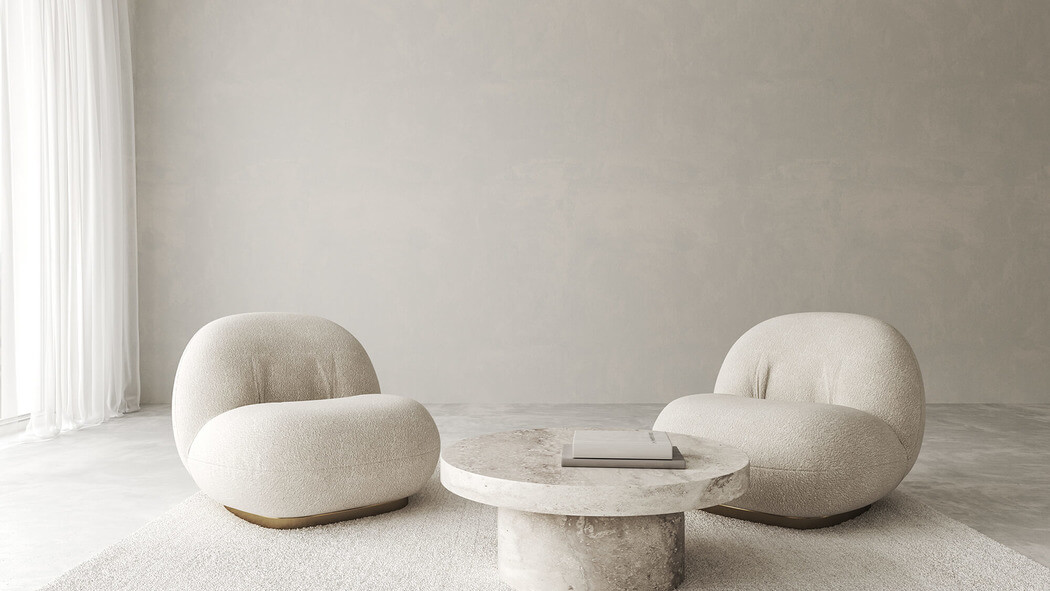
Minimalism has long been a popular style, and this trend is now present in almost all areas of life.
Features of minimalism:
-
Simplicity of forms and purity of lines: It was important that each object be filled with meaning and not superfluous.
-
A neutral color scheme: white, gray, black, and pastel shades are best suited to this style and harmoniously combined with any interior details.
-
Natural materials: for example, wood "ages" beautifully and emphasizes the space's natural beauty.
-
The functionality of each piece of furniture: it is this aspect that is valued as much as aesthetics.
-
Plenty of free space: large windows, no unnecessary partitions, spaciousness in the house or apartment.
-
A little decor and accessories.
Colors

The color scheme is dominated by neutral shades that do not overload but refresh the living space:
-
White is the color of perfection and purity, lightness and serenity.
-
Beige, milk, pearl, inari—these colors will never go out of fashion. Classics neutralize negative emotions, give a sense of peace and quiet, and provide mental harmony.
-
Brown is the color of wood and, therefore, coziness. Additional properties will depend directly on the shade: sandy, brick, walnut, chocolate, etc. But in any case, brown "grounding," illustrating comfort, does not rush anywhere.
-
Gray is a practical color, appropriate in any interior.
Furniture
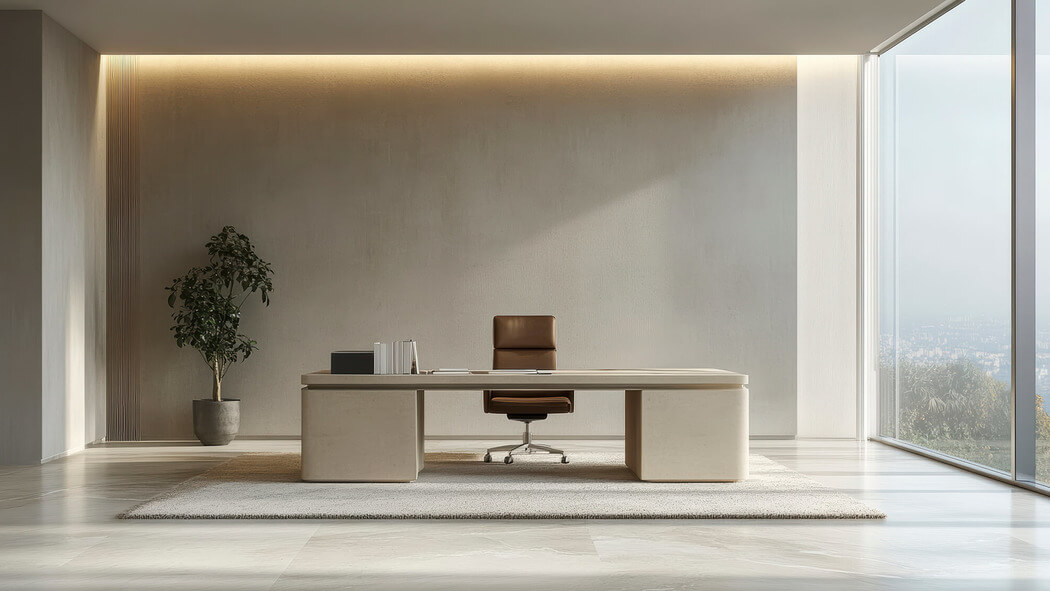
Design experts advise focusing on quality, functional furniture with clean lines and simple shapes. The key is to be discerning and thoughtful in your choices. If you're unsure about a particular piece of furniture, it's better to forgo it. Each element should serve a significant role, not just collect dust.
To save space, explore the range of ergonomic furniture, such as poufs with storage space, folding tables, and sofa beds.
Choose natural materials in neutral shades such as brown, white, gray, and black, if possible.
Interior doors
Since minimalism requires a lot of free space, compact sliding doors and invisible doors (frameless) will be great solutions for some rooms. These are especially suitable for dressing rooms, pantries, and other small areas. Also relevant are wooden slabs in light neutral shades with virtually no decoration or models with neat aluminum strips or glass inserts, for example.
Restrained, stylish doors with no frills will harmoniously fulfill the primary function of space zoning and "lighten" the interior with their timeless design. They can be of different colors and with different finishes to match the apartment or house's overall concept fully. The most popular shades of minimalist interior doors are:
-
Bianco Noble.
-
Gray Oak.
-
Loire Ash.
-
Pecan Nutwood.
-
Polar White.
-
Ribeira Ash.
-
Shambor.
-
Snow White.
-
Veralinga Oak.
Decor, art, and plants
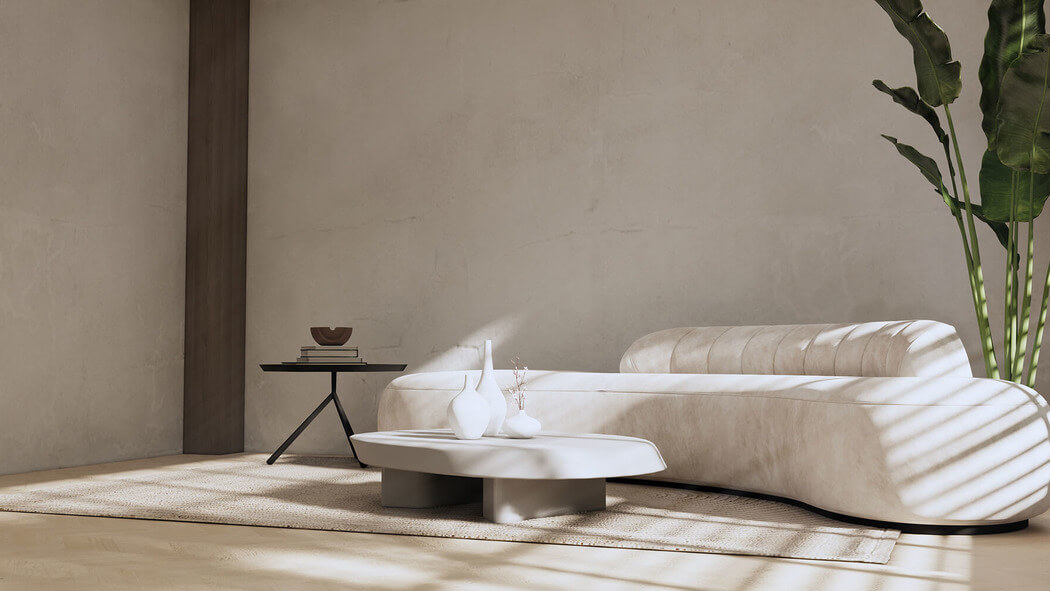
Minimize secondary furnishings and display only carefully selected paintings, figurines, or vases. Custom-shaped rugs will also fit perfectly in a minimalist living space that lacks something spectacular.
Since pastel colors are combined with shades of green, you can refresh the atmosphere with potted flowers. But plants should not dominate; it will be enough to have one or two, but with unusual leaves, for example.
Flooring
The most important thing is to maintain the floor's strictness; it should not be primarily "noticeable." If it draws attention to itself, then only by emphasizing the color of the walls (similarity or contrast, but necessarily combined).
Floor coverings in this style are suitable for practical and monochrome materials without a pattern: stone or wood.
Windows, curtains, and light fixtures
The minimalist design means lots of natural light, so huge windows with sleek curtains are welcome. For bedrooms and children's rooms, choose curtains made of dense fabrics so that sleep is comfortable. Veil or tulle is the perfect material for curtains.
The simpler and neater the lamps and chandeliers are, the better.
Problems of Minimalist Design
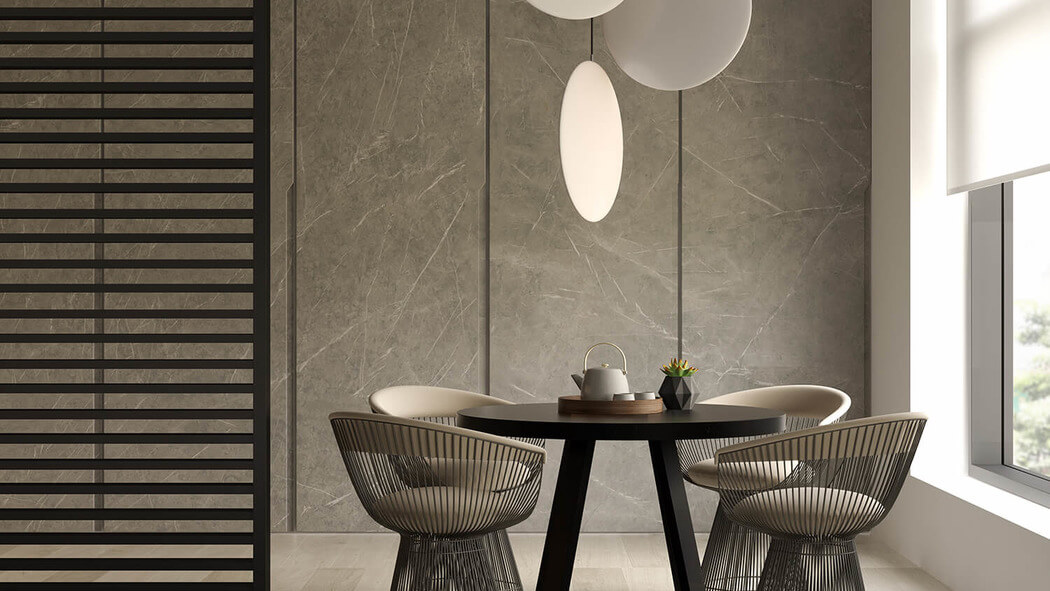
Minimalist design has won hearts and minds with its promise of simplicity, elegance, and tranquility. But beneath its sleek surface, some not-so-obvious challenges can turn a pristine vision into a complex reality. Sometimes, minimalist housing seems impersonal, cold, and devoid of life.
Without careful consideration, the minimalist ethos of "less is more" can result in environments that lack warmth and character. Furthermore, the strict adherence to minimalist principles can make it challenging to inject personal flair or accommodate evolving needs over time. Balancing aesthetics and practicality is crucial to ensure minimalism is a backdrop for a comfortable and functional living space.
Minimalist Style Kitchen
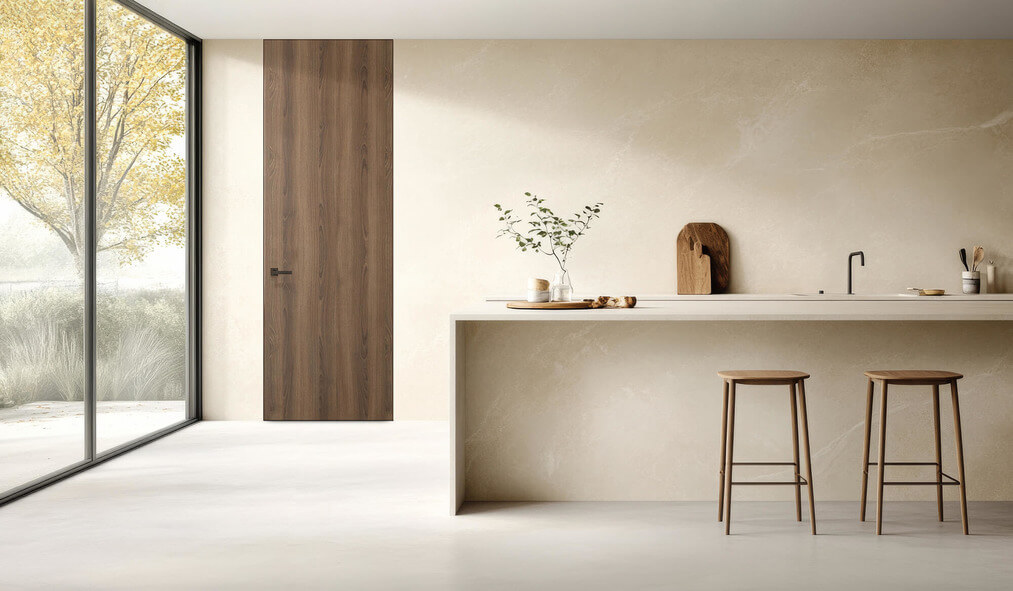
Interior Door Model: Optima Pecan Nutwood Frameless
The mantra in a minimalist-style kitchen is simplicity and efficiency. This design approach features sleek cabinetry, clean countertops, and an emphasis on uncluttered spaces. However, achieving a functional yet minimalist kitchen requires some strategic planning. Investing in high-quality, integrated appliances that blend seamlessly with your cabinetry is one key recommendation. Another tip is to utilize hidden storage solutions, such as pull-out drawers and concealed cabinets, to keep kitchen essentials out of sight while remaining easily accessible.
Minimalist Style Living Room
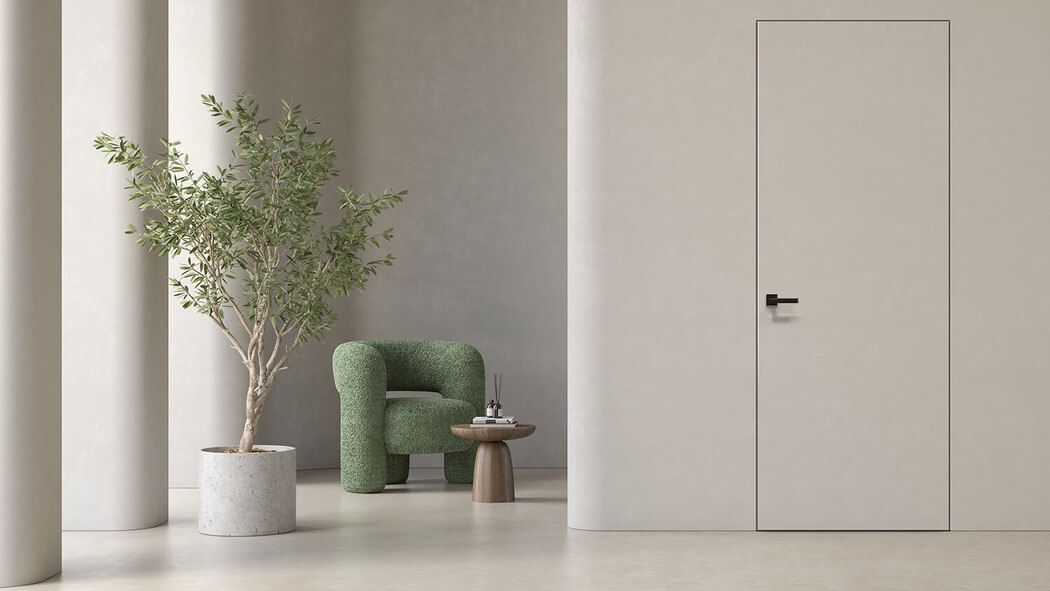
Interior Door Model: Primed Door Example For Plastering In Brown
Start by choosing multifunctional furniture, such as a sleek coffee table with hidden storage or a minimalist sofa with built-in compartments. Incorporate soft, layered textures like a cozy rug or throw pillows to introduce warmth without clutter. To enhance the room's ambiance, select a few statement pieces—such as a modern art print or a sculptural lamp—that add character while staying true to the minimalist ethos.
Minimalist Style Bedroom
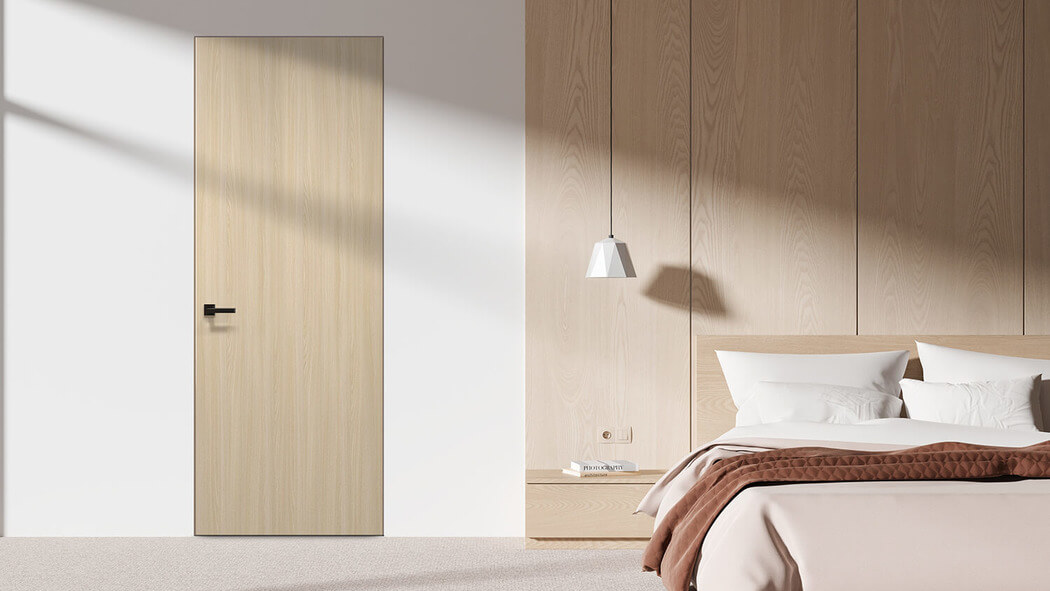
Interior Door Model: Optima Loire Ash Frameless
To make the space both serene and functional, focus on a high-quality, understated bed frame and bedding that promotes relaxation. Consider built-in storage solutions, like under-bed drawers or floating shelves, to keep essentials neatly tucked away. Additionally, add a touch of personality with minimal but impactful decor, such as a monochromatic piece of artwork or a sleek bedside lamp.
Minimalist Style Bathroom

Interior Door Model: Optima Black Matte Frameless
For added elegance, choose a minimalist tile pattern with a subtle sheen to provide visual interest without overwhelming the space. To keep your bathroom feeling fresh and functional, use discreet organizers and opt for high-quality, durable materials that complement the overall design.
Minimalist Style Office
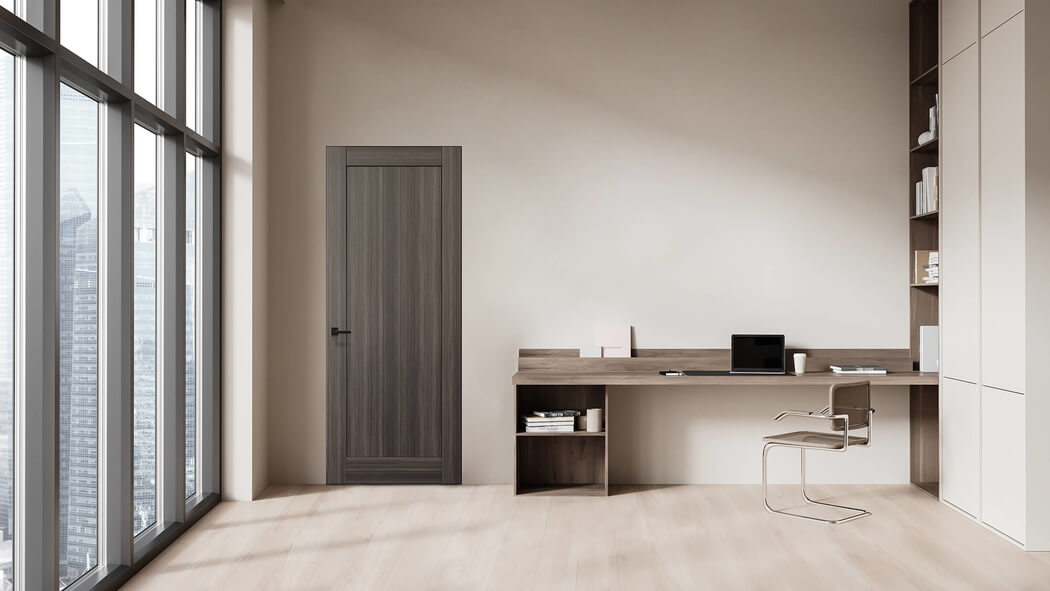
Interior Door Model: Avon 07 Veralinga Oak Frameless
A minimalist-style office aims to foster productivity through a clean and orderly environment. Choose furniture that combines form and function, such as a sleek desk with built-in cable management, to make the most of this design approach. Incorporate modular storage solutions that can adapt to your needs while keeping the workspace uncluttered. To add a personal touch without disrupting the minimalist aesthetic, choose a few well-curated decorative items, such as a simple plant or an elegant desk organizer, that enhance the space's functionality and visual appeal.
FAQ
1. What are the main features of minimalist home decor?
Clean lines, neutral colors, open spaces, and purposeful furniture.
2. Is minimalist design suitable for small apartments?
Yes, it’s ideal for maximizing space and reducing clutter in compact living areas.
3. How do I start transforming my home into a minimalist style?
Begin by decluttering, using neutral tones, and choosing multifunctional furniture.
4. Can minimalism still feel cozy and warm?
Absolutely—by adding texture, natural materials, and warm lighting.
Conclusion
Thus, minimalist interior design epitomizes three basic principles:
-
Laid-back lifestyle in an open-plan layout.
-
Visual clarity: clean lines and minimal decor.
-
Monochromatic palettes.
When buying something for your home, always make sure that it is really necessary, that it is quality, and that you will definitely use it.

